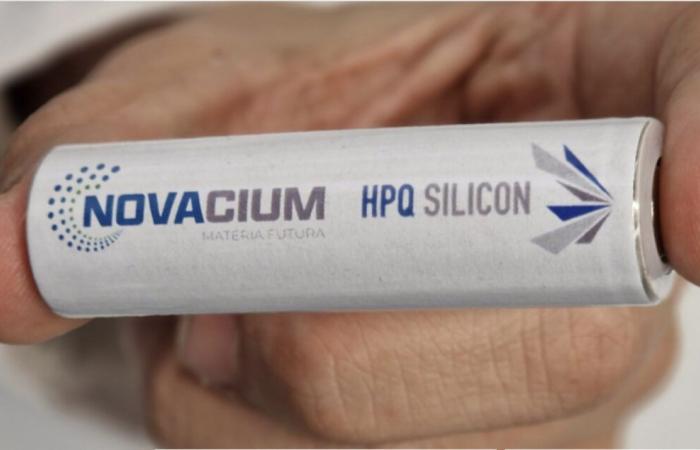Electric car news
The automotive industry is booming with the imminent arrival of a new generation of batteries for electric vehicles. Among the most promising innovations, silicon anode batteries stand out for their potential to radically transform charging and power performance. Let’s dive into the details of this technology that could well redefine our experience of electric driving.
The promise of silicon anodes: ultra-fast charging
Conventional lithium-ion batteries use graphite anodes, a material that has proven itself but is reaching its performance limits. The introduction of silicon into the composition of anodes opens up new perspectives, particularly in terms of charging speed.
Manufacturers of silicon anode batteries highlight spectacular gains in power. Some even announce the possibility of recharging a battery 0 to 100% in just 90 seconds for certain experimental models. Although these figures relate to test cells, they suggest a future where recharging an electric car could be done as quickly as filling up with gasoline.
This advancement directly addresses one of consumers’ main concerns: charging time. Imagine being able to charge your electric vehicle during a short coffee break, rather than waiting for hours. This is the promise that these new batteries make.

Increased power and autonomy: a delicate balance
If ultra-fast charging is the strong point of silicon anode batteries, what about autonomy? The gains in terms of energy capacity are more modest but nonetheless significant. Manufacturers announce capacity increases of around 20% compared to standard lithium-ion cells.
It is important to note that the industry seems to be favoring improvements in power rather than energy at the moment. This means that the first generations of vehicles equipped with these batteries may not offer drastically greater range, but rather significantly improved charging and acceleration performance.
- Ultra-fast charging: can recharge in minutes
- Increased power: better acceleration performance
- Moderate increase in capacity: approximately 20% autonomy gain
These features could transform the driving experience of electric vehicles, making them more practical for long journeys and more dynamic on the road.
Despite these tempting promises, widespread adoption of silicon anode batteries faces several challenges. The first concerns sustainability. Silicon tends to expand and contract during charge and discharge cycles, which can affect battery longevity.
Manufacturers are working hard to solve this problem. Some companies, like Molicel, are already announcing significant improvements in service life cells using a modest mix of silicon. It’s a step in the right direction, but it will still be some time before these batteries can match the longevity of current lithium-ion cells.
Another challenge concerns large-scale production. Manufacturing processes must be optimized to integrate silicon efficiently and economically. This involves significant investments in production lines and potentially an increase in the cost of batteries, at least initially.
The impact on the electric vehicle ecosystem
The arrival of silicon anode batteries will not happen in a vacuum. Their integration into electric vehicles will have repercussions on the entire electric mobility ecosystem.
First of all, charging infrastructures will have to adapt to support these new ultra-fast charging capacities. Not all current charging stations are capable of delivering the power necessary to fully exploit the potential of these batteries. This will require significant investments in the charging network.
In addition, car manufacturers will have to rethink the design of their vehicles to best integrate these new batteries. This could lead to changes in car design, particularly in the battery cooling system, crucial for supporting high-power loads.
Future prospects: a transitional technology?
Silicon anode batteries may well represent a crucial interim step in the evolution of energy storage technologies for electric vehicles. While solid-state batteries are often touted as the long-term future, silicon anodes offer a more immediate solution to improving electric vehicle performance.
We can expect to see the first models equipped with these batteries as soon as 2024 or 2025. These vehicles could transform our perception of electric mobility, by offering charging performance comparable to that of thermal vehicles.
In the longer term, we are likely to see a coexistence of different battery technologies, each suited to specific uses. Silicon anode batteries, for example, could specialize in applications requiring ultra-fast charging, while other technologies focus on energy density for maximum range.
The advent of silicon anode batteries marks an important step in the evolution of electric vehicles. Although this technology is not without its challenges, it promises to solve one of the main obstacles to the mass adoption of electric cars: charging speed. As the industry overcomes technical hurdles and infrastructure adapts, we may well see a dramatic acceleration in the transition to electric mobility. The era of long waits at charging stations may be coming to an end, paving the way for a new generation of electric vehicles that are more efficient and more convenient than ever.
Written by Alexandra Dujonc
After studying electrical engineering, I worked on research and development projects aimed at improving the charging capacity of electric cars, which I made into my specialty! I put my in-depth knowledge on the subject of electric charging at your disposal.
React to the article








